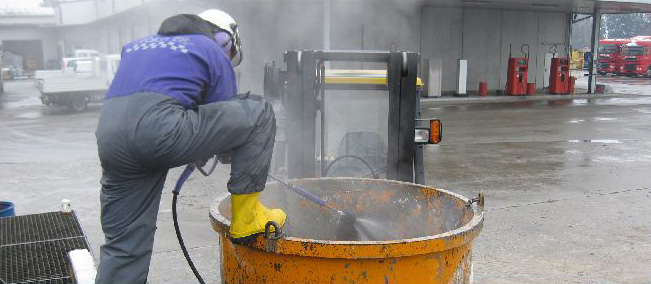When To Use a Short Jetting Gun
A water jetting gun (jetting lance) is a useful tool in water jetting applications. The WJA Blue Code of Practice specifies the use of jetting guns and the standards that they must generally comply with. However, these standards must be altered when using in confined spaces.
The use of a water jetting gun should be 1.1 metres long for all standard applications. This is possible in most cases. However, when cleaning inside a tank or other confined area, this just isn’t feasible. The use of a shorter gun is only appropriate if structural constraints are present, making the use of a standard water jetting gun not possible. The code explains that a short jetting gun can be used with a permit to work system, which is 0.75 metres long. However, this is still not possible or safe in tight spots, bringing the need for a shorter gun and lance.

Before Using a Short Jetting Gun
Before the use of a short water jetting gun, there are a few factors to consider:
- Can the work be done by another method?
- Can the employee be removed? for example the use of a robot, or a remote tank cleaning head?
If the answer to both these questions is “NO” then a short lance may be used. Wherever possible, we use processes that don’t require man entry. However, sometimes this cannot be avoided in confined spaces. Because of this, all Hydroblast workers are trained in confined space entry.
When Working with a Short Jetting Gun the Following Procedures must be in Place:
Firstly, it is important to carry out any work that can be done, using a standard jetting gun. Keeping exposure to a short jetting gun to a minimum is absolutely essential, to minimise risks to workers.
Furthermore, all short water jetting guns can only be assembled and used by a designated competent person who is trained in doing so. No one should alter the jetting gun after issue. The issue of a short jetting gun should only be undertaken by a person who is competent in the Permit to Work system.
To increase the safety of workers, workers should consider reducing the pressure and flow the water. This reduces reaction forces when using a short jetting gun. It is important to note that the trigger mechanism must never be locked, wedged, or blocked in the ‘on’ position. Additionally, all operators should have a minimum of 1 year’s water jetting experience.
When using such equipment, the PPE used should meet all of the relevant standards supplied by the Blue Code of Practice. Additionally, all employees must create their own internal procedures, Site Specific Risk Assessment, and Safe Systems of Work.
With the use of any water jetting equipment, all workers must be fully trained. With Hydroblast, we are experts in the field and are fully trained in all equipment. If you require any water jetting services, please do not hesitate to contact us.

